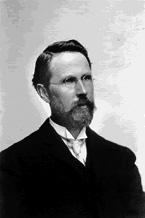
In 1897, Berea College initiated a forestry effort. This was the same year as the Forest Reserve Organic Act and the first College forestry degree programs in the United States began. The effort was initiated by Professor Silas C. Mason in the September, 1897. The goals were general forestry education offerings for the students and a source of wood and income for the College. Mason’s first step was to take horseback rides through the hills just east of Berea to locate suitable tracts of land to acquire. Berea College did not and does not offer a forestry degree program. Many Berea students have pursued advanced degrees and careers in:
- forestry,
- wildlife management
- and other natural resource related fields.
This is as a result of the forestry, natural resources and biology classes offered at Berea.
Egalitarian Forestry
Berea College’s forestry initiative was perhaps the first in the United States launched within an egalitarian framework. Berea College, located on the edge of the Cumberland Plateau in Berea, KY, was established in 1855 by Christian anti-slavery activists to offer education to both whites and emancipated slaves. In 1897, Berea College was a unique private college, especially for the American South:
- interracial,
- coeducational,
- and tuition free education offered to qualified, but economically disadvantaged, students.
Also, the College had already made a commitment to serve the great need for education in the Southern Appalachian Region. In 1897, forestry practice had mainly been the province of the wealthy (e.g. Biltmore Estate) or the government.
The Pioneer: Professor Mason
Silas C. Mason (right) was a pioneer in American Forestry. Mason was also a professor of Horticulture and Forestry at Berea. He had an advanced degree in Horticulture from Kansas Agriculture College, now Kansas State. Yet, he lacked today’s equivalent of a Forestry degree.

He traveled to Europe to study forestry in France, Switzerland, Germany and Prussia. In 1895, he was offered the position of Assistant Chief of the USDA Division of Forestry (now Forest Service) by Dr. Bernhard Fernow. He published early research on Old Field Forest Growth in 1899 (Central States Forest Experiment Station Archives). While many of the pioneers in American forestry tried to apply European forestry models to North America, Mason realized, “..how different American forest problems are from those of the Old World and how great is our need of the study of the different tree species under conditions most likely to be those of the future.”
Forest Land Acquisition
In 1898, Berea acquired its first forest land. The first tracts of forest land were purchased by Mason from his personal funds. His stated purpose was to have land for the study of forestry by his classes and to provide wood and income for the College.

In 1899, Ms. Sarah Fay of Boston (right; in the middle) stepped in as Mason’s benefactor, providing funds for land acquisition and his salary. She recognized the benefit of having a continuous block of forest. By 1918 the Fay endowment had provided for the acquisition of 5,400 acres. Allowance was made to use timber incomes to support future acquisitions.
Shift from Abuse to Management
The condition of the land that became the Berea College Forest was much like most of the land in the Southern Appalachians in the late 19th Century. The land had been cleared, over-farmed/grazed, burned repeatedly and the forests indiscriminately cut. Even steep land was tilled for row crops. Much of the site quality was low either due to soil erosion resulting from farming or to inherent conditions (e.g. dry, rocky sites). Most of the land acquired between 1898 and 1960 was in some early-successional stage due to agriculture (usually), fire and/or harvest. Descriptions of the tracts ranged from young tree growth cover to bare soil with erosion gullies.
Fire control, using faculty, staff and student crews, began as the land was acquired. However, many of today’s best forest stands (tree size, quality, health, diversity, etc.) resulted from forested areas that were commercially clear-cut just prior to acquisition. Subsequent thinnings have helped such stands.
Mason completed a management plan for the Forest in 1907. The plan was reviewed by such American forestry pioneers as Dr. Fernow, Carl Schenck (Biltmore) and Henry S. Graves (Yale).